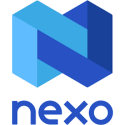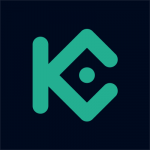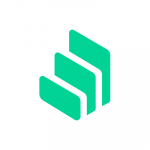
Cryptocurrencies are often associated with high-risk investments because of price volatility. However, there are low-risk investment products that revolve around stablecoins, which are blockchain-based digital currencies whose price is pegged to fiat or commodities, enabling them to reduce the volatility risk. Here we discuss how to generate interest or “yield” with USDC, the stablecoin that’s fully backed by US dollars.
| USDC | USDT | DAI | BUSD | ETH | |
| Aave | 7.77% | 10.19% | 11.47% | – | 1.56% |
| Compound | 5.97% | 3.85% | 8.56% | – | 0.06% |
| Nexo | Up to 14.00% | Up to 16.00% | Up to 14.00% | – | Up to 8.00% |
| BlockFi | 8.50% | 8.75% | Up to 6.00% | Up to 8.50% | Up to 3.50% |
| Kucoin | 6.00% | 100.00% | – | – | 4.60% |
| Binance | 5.78% | 3.33% | 5.00% | – | Up to 0.78% |
| Crypto.com | – | Up to 6.50% | Up to 6.50% | – | Up to 5.50% |
What is USDC?
USDC is a digital currency issued by US-based fintech firm Circle. It is backed by the US dollar, based on a 1:1 ratio and relies on a multi-chain infrastructure. After starting as an ERC-20 token, USDC has expanded to other major blockchain platforms, including Algorand, Solana, Avalanche, Stellar, and Tron.
To maintain the peg, Circle keeps reserves consisting of USD cash, equivalents, and US Treasuries. The reserves are monitored every month by third-party auditor Grant Thornton.
USDC’s stable peg and Circle’s reputation have driven demand for this digital dollar token, helping it become the fastest-growing stablecoin. It is currently the fourth-largest cryptocurrency, with a market cap of over $50 billion.
USDC: Staking vs Lending
Crypto staking and lending are two ways to profit off your crypto holdings without selling them. Moreover, these passive income mechanisms enable USDC holders to put their money to work, as most dollar stablecoins fetch greater interest rates than traditional savings accounts, especially amid today’s low interest rate environment.
The main difference between the two is that USDC staking requires you to lend your digital dollars to a blockchain or crypto network for rewards, while USDC lending means lending it to borrowers in return for interest.
USDC Lending Platforms
The most straightforward way to earn passive income on USDC is to deposit it with centralized lending platforms, which provide some of the highest annual percentage yields (APY). Here are some of our top picks for lending platforms:
 Nexo
Nexo
Nexo provides an APY of up to 12% on USDC deposits, which is much higher than the average. In addition, Nexo is great for beginners as it has an intuitive interface.
Investors prefer Nexo because it offers compound daily payouts and flexible earnings. The platform has $375 million insurance on all custodial assets covered by BitGo and Ledger.
By using Nexo – the platform’s native token – you’ll benefit from more perks, such as better interest rates and more free crypto withdrawals.
U.S. customers are no longer accepted.
 Hodlnaut
Hodlnaut
Hodlnaut is a crypto platform that enables users to diversify their crypto investments with six top digital assets, including Bitcoin, Ethereum, and USDC. The APY on USDC deposits can reach up to 9.40%.
Users can deposit their stablecoins anytime, with no lockup or deposit limits. Furthermore, they can receive weekly payouts and withdraw the funds at any time. The withdrawal fee is $10 USDC.
Pros and Cons of Lending Platforms
| Pros | Cons |
| High yields – crypto lending platforms offer the highest yields on USDC deposits. | Centralized – these are centralized platforms. You should do your due diligence before entrusting USDC funds and keys. Also, be ready to pass through KYC/AML verification. |
| Low fees – to attract investors, crypto lending platforms charge minimal fees. |
USDC Lending on Exchanges
Another way to earn interest on USDC lending is through centralized crypto exchanges, which use your funds to lend to traders. In most cases, you will have to lock your USDC funds for a certain period. Here are the most popular exchanges where you can put your USDC funds to work:
 Binance
Binance
Binance is the largest crypto exchange by trading volume. It offers many crypto products besides its flagship exchange terminal. Binance Earn is a one-stop hub for its yield-generating possibilities, including earning interest on USDC. While it offers generous rates for most digital assets, the APY on USDC flexible deposits is only 1.20% currently, as Binance counts on other stablecoins for its ecosystem. Nevertheless, investors can rest sure their funds are safe.
 Kucoin
Kucoin
Kucoin is a fast-growing crypto exchange founded in 2017. It has managed to expand its global presence and reach a valuation of $10 billion, according to its latest financing round conducted in May 2022. The company raised $150 million from a pool of investors, including Circle Ventures.
Kucoin supports USDC lending to let users earn interest. Unlike other exchanges, Kucoin enables users to lend directly to counterparts, which decide the interest rate on their own. Thus, the APY figure can range from 1% to over 50%. Users can choose to lend USDC holdings for 7, 14, or 28 days.
 Crypto.com
Crypto.com
Founded in 2016, Crypto.com has become one of the most trusted cryptocurrency services. It offers exchange, non-fungible token (NFT), payment, and lending services to more than 50 million users worldwide. In addition, it boasts insurance coverage of $750 million on all assets. Last year, it was selected by Visa to settle transactions on its payment network.
The platform’s Crypto Earn supports USDC and offers an APY of 8% on average. You can choose from flexible and fixed-term deposits, but the former would generate a lower yield. The interest rewards are paid weekly.
Pros and Cons of Lending on Exchanges
| Pros | Cons |
| Large ecosystems – large crypto exchanges are one-stop solutions for all kinds of crypto operations that can be accessed conveniently. For example, you can easily exchange your USDC for another token, use it for staking or consider margin trading. | Centralized – like crypto lending platforms, crypto exchanges are holding your funds in custody, which means higher risks than holding your keys by yourself with a hardware wallet. |
| Lower yields – most crypto exchanges offering lending services provide lower yields compared to specialized crypto lending platforms. |
USDC DeFi Lending
Decentralized finance (DeFi) is one of the most important trends within the crypto industry. DeFi apps enable users to access financial services run by algorithms and powered by blockchain instead of being managed by centralized entities. Here are the best lending protocols as of today:
 Aave
Aave
Aave is one of the largest DeFi markets, with the total value locked (TVL) figure near $10 billion. The protocol specializes in lending services, and USDC plays a leading role, accounting for over 20% of all assets on Aave.
The interest rate for contributing to USDC liquidity is 1.50%.
 Compound Finance
Compound Finance
Compound is a direct competitor to Aave. The lending protocol is the primary catalyst that triggered the DeFi craze back in 2020. With a TVL figure of over $5 billion, Compound is the third-largest lending protocol after Maker and Aave.
USDC plays a leading role here, although the APY on USDC deposits doesn’t exceed 0.65% currently, down from 2% in March 2022.
 Curve Finance
Curve Finance
Unlike Aave and Compound, Curve is a decentralized exchange (DEX) focused on stablecoins. It acts as an automated market maker (AMM), meaning it has no centralized order book to match buyers and sellers. Instead, it relies on liquidity pools consisting of stablecoins. Liquidity providers are incentivized for their effort. For example, one of the largest pools on Curve requires users to lock DAI, USDC, and USDT to earn an APY of about 2%.
Pros and Cons of DeFi Lending
| Pros | Cons |
| Decentralized – DeFi apps are run by algorithms, and they don’t require KYC/AML verification. That also means that you have full control over your funds. | Lower yields – DeFi lending protocols offer much lower rates compared to centralized counterparts. |
| High fees – DeFi protocols built on Ethereum come with high gas fees. That’s why many DeFi apps are now being built on low-cost blockchains, such as Avalanche and Polygon. |
Why are USDC Yields so High?
USDC yields are much higher than the interest rates provided by traditional savings accounts despite the parity between the digital dollar and the fiat dollar. How is that possible? Traditional high-yield savings accounts barely reach an APY of 1%, but crypto lending platforms can exceed the 10% mark while eliminating the volatility risk.
It all boils down to the business model implemented by crypto companies. Specifically, they let users lend digital currencies to borrowers willing to pay higher rates, as they can use their crypto as collateral, which one can’t do with traditional banks. As a result, the demand for loans against crypto collateral drives the interest rates, offering crypto investors the opportunity to generate better returns than with money market products.
Keep up to date on everything happening in the world of cryptocurrencies when you subscribe to Bitcoin Market Journal.

